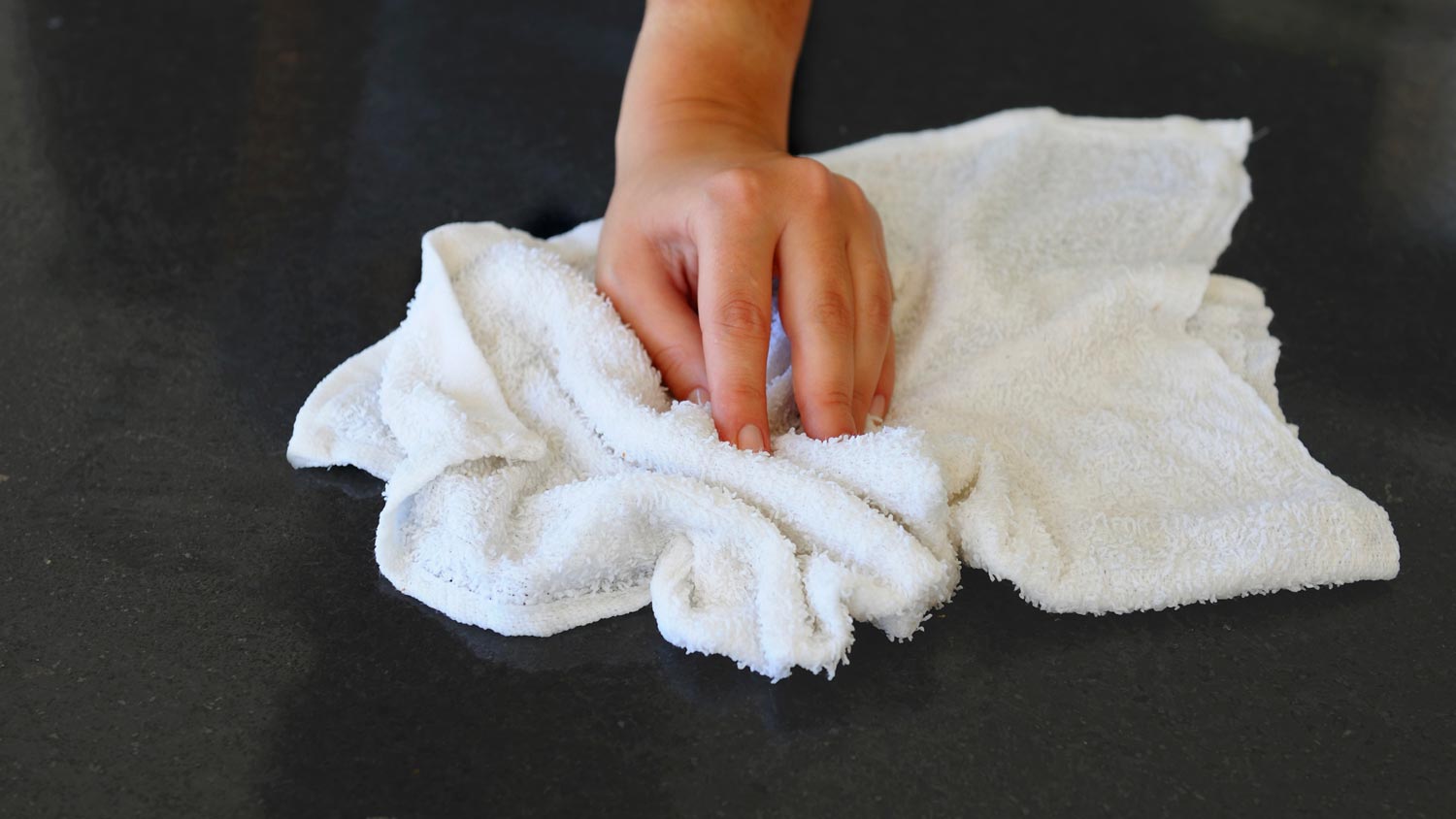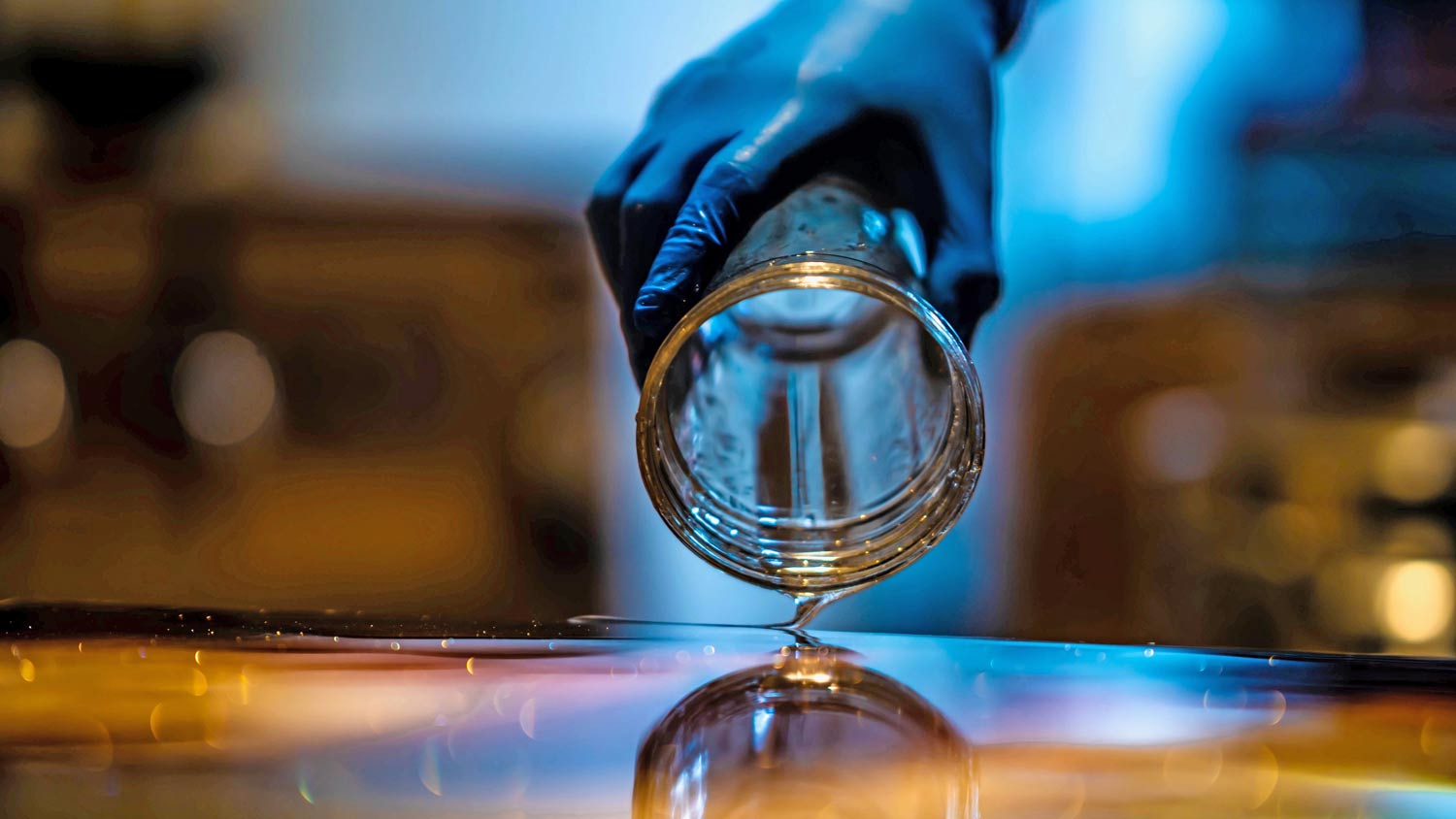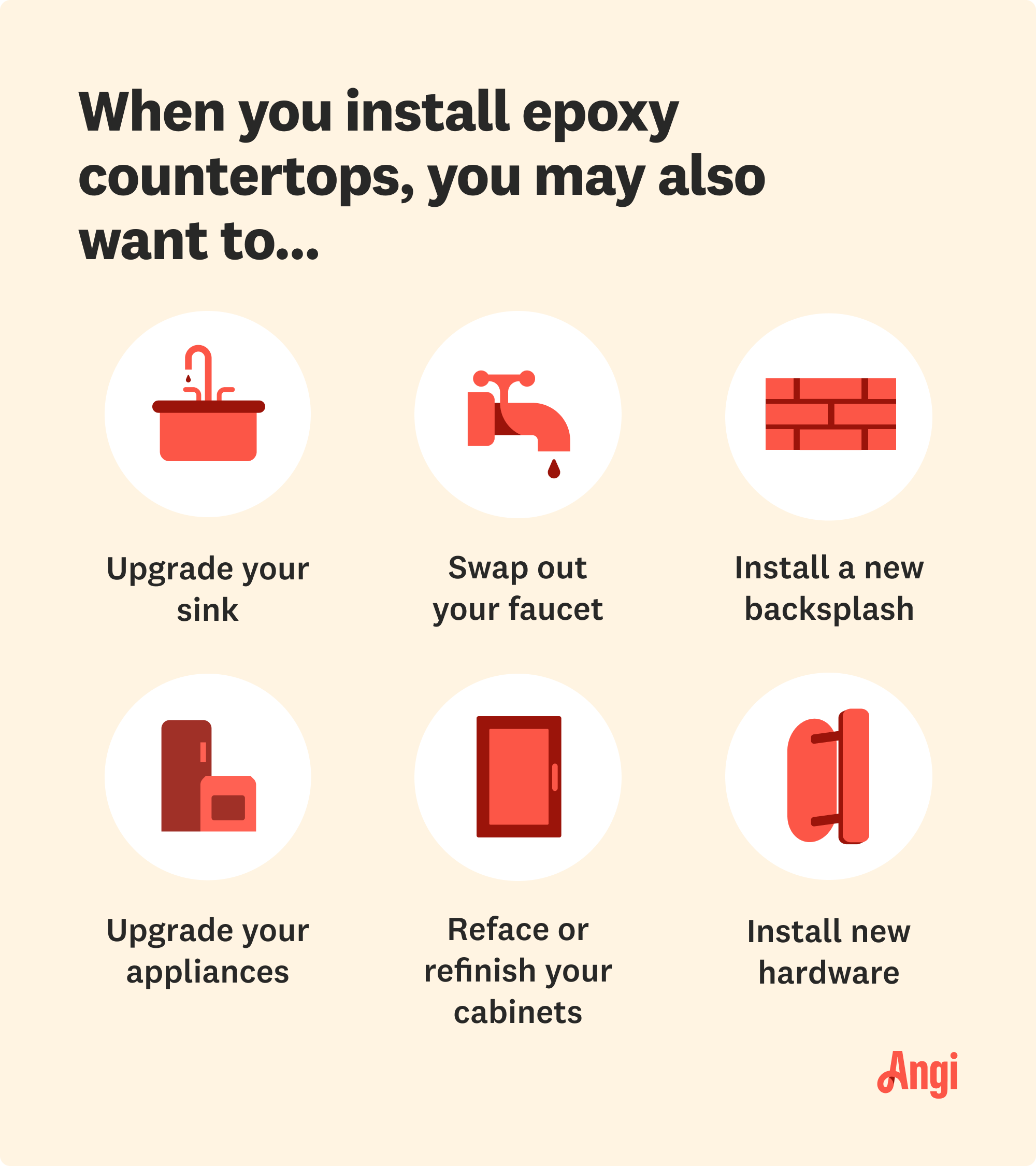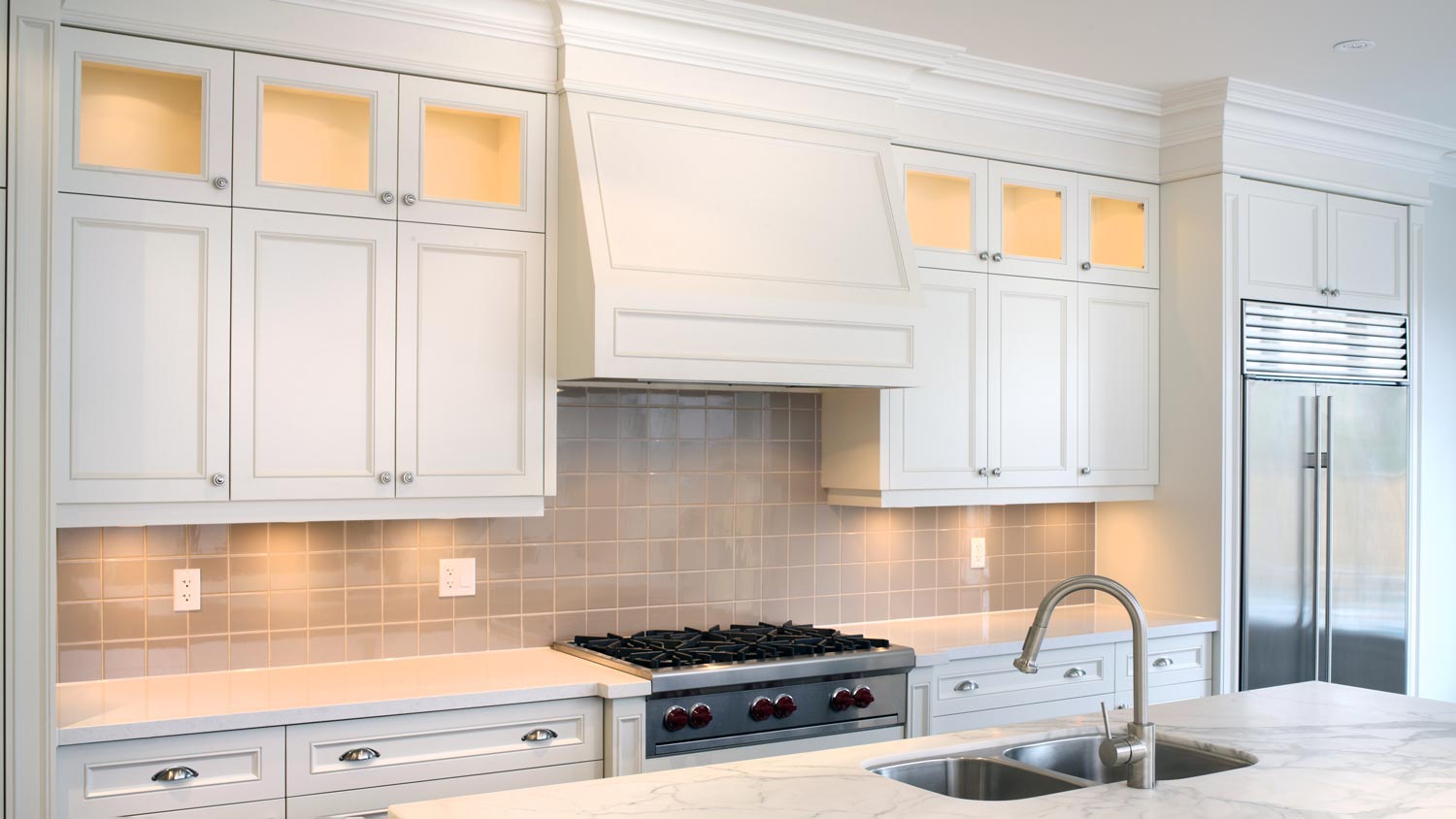
Granite counters are durable and stylish, but if you’re wondering how much granite countertops cost, it’s time to dig into the details.
Learn more before you pour


Epoxy countertops look incredible thanks to their incredible glossy finish. But anyone who has worked with epoxy knows the devil is in the details. For those wanting to understand how to epoxy countertops, these trustworthy tips will help you create the shiny, durable finish of your dreams.
Many homeowners love epoxy because it strengthens just about any porous surface, making it more durable and resistant to moisture—no regular sealing is required. You can pour it on to create level surfaces and fill gaps or roll it on for a smooth, even finish.
You will find different epoxies made for specific purposes, including countertop repairs or coating floors, patios, and furniture for indoor and outdoor use.
Use a food-safe epoxy resin kit for countertop projects on counters, bar tops, or tables. Most options work on various surfaces, including concrete, MDF, laminate, wood, tile, ceramic, natural stone, and marble. If you plan to coat an outdoor countertop, ensure the epoxy you pick is rated for outdoor use and is highly UV-resistant to avoid yellowing.
DIYers need to know that epoxy is super sticky and very difficult to remove from skin. Additionally, even if the product they use is labeled “low VOC” or “non-toxic,” wearing protective work gear, including long sleeves and pants, gloves, and a mask or respirator, is essential.
While epoxy should be applied in a dust-free environment, keeping the windows open or working in a well-ventilated area is a good idea.

A seal coat is similar to a paint primer. It preps the surface for the epoxy coating. On porous surfaces like wood, a seal coat significantly reduces the formation of air bubbles, enabling homeowners to achieve a more professional finish.
Unlike the way you whip eggs, you can't rush mixing epoxy. It needs to be stirred slowly and steadily to avoid air bubbles. Following the manufacturer's instructions for mixing times is always best, but the process usually takes several minutes. Mix it manually with a flat paint stick instead of a drill attachment. Ensure you scrape the mixing container's sides and bottom for even blending.

While epoxy is a clear resin, you can mix it with colors to create different effects. Pigments include metallic powders, liquid dyes, and mica pigments made from natural minerals. Pre-tinted kits are also available if you are uncomfortable with mixing colors.
However, just as homeowners need to test house paint on walls to get a feel for the color, you need to do the same with epoxy colorants. The countertop surface, lighting, and even the thickness of your pour can all affect the final color’s appearance.
Mix a small test batch first and apply it to a discreet area to avoid any unexpected surprises. This quick step can save you from a color catastrophe and help you fine-tune the mixture before you commit.
Air bubbles can still appear after pouring epoxy, even when you mix it carefully and apply a seal coat. Fortunately, DIYers can use a heat gun to pop bubbles without disturbing the applied epoxy. The trick is to glide the heat gun over the epoxy surface, never lingering in one spot. Pros use a propane torch, but they have the experience not to burn the resin or the countertop's surface.

An epoxy surface feels dry to the touch after 12 to 24 hours, but it needs up to seven days to reach maximum hardness. That means using your counter before the epoxy finishes curing can lead to scuffing, scratching, and smudging.
When in doubt about cure times, always follow the manufacturer's instructions. This is especially important in areas with high humidity, where homeowners may need to take additional steps to ensure their counters fully cure.
Unused mixed epoxy will eventually harden. So, you should never pour it down the drain, as it can wreck your plumbing. Homeowners should also avoid tossing unmixed epoxy in the trash, as it is an environmental hazard.
If you have small amounts of leftover resin and hardener, the best disposal method is to mix them in the correct ratio and let them fully cure. Once the epoxy is cured and hardened, it’s considered inert and can usually be tossed with the regular household trash. Check your local trash guidelines, or find a pro who disposes of hazardous waste.
While experienced DIYers can epoxy their countertops for as low as $100, it is a messy job that can deliver mixed results for first-timers.
Working with a local countertop contractor with epoxy experience will deliver predictable results whether you decide to epoxy an existing counter or have new ones installed. The cost of epoxy counters depends on materials, the size of your kitchen, and labor costs in your area. Typically, homeowners can expect the price for brand-new countertops to range from $2,000 to $7,000.
From average costs to expert advice, get all the answers you need to get your job done.

Granite counters are durable and stylish, but if you’re wondering how much granite countertops cost, it’s time to dig into the details.

Are you leaning towards solid surface countertops? If so, you've likely come across Corian®. Find out how much Corian® countertops cost so you can plan your project.

If you’re looking to refinish your countertops, epoxy will make them shine for years to come. This guide will help you budget for epoxy countertop costs.

In the battle of laminate versus quartz countertops, there isn’t always a clear winner. It depends on the project. Let’s get into the details before you buy.

Whether installing new counters in your kitchen or trying to anchor the ones you have, here are 6 tips for how to secure a countertop to a cabinet.

Laminate countertops are not heat resistant, so if you’ve left a burn mark, here’s how to fix a burnt countertop to make it look great again.